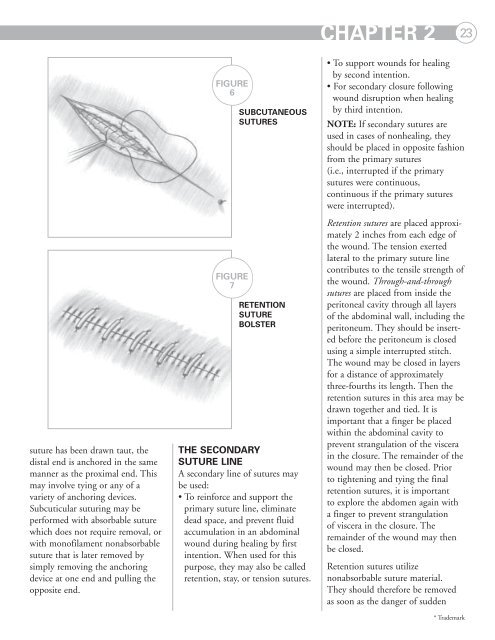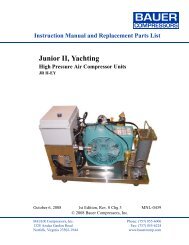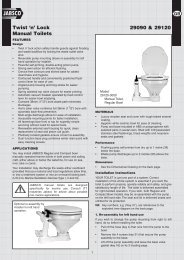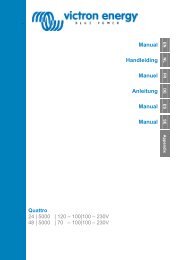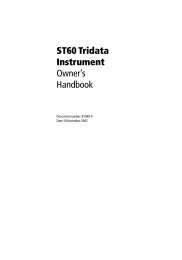Wound Closure Manual (PDF) - Penn Medicine
Wound Closure Manual (PDF) - Penn Medicine
Wound Closure Manual (PDF) - Penn Medicine
You also want an ePaper? Increase the reach of your titles
YUMPU automatically turns print PDFs into web optimized ePapers that Google loves.
CHAPTER 2 23<br />
suture has been drawn taut, the<br />
distal end is anchored in the same<br />
manner as the proximal end. This<br />
may involve tying or any of a<br />
variety of anchoring devices.<br />
Subcuticular suturing may be<br />
performed with absorbable suture<br />
which does not require removal, or<br />
with monofilament nonabsorbable<br />
suture that is later removed by<br />
simply removing the anchoring<br />
device at one end and pulling the<br />
opposite end.<br />
FIGURE<br />
6<br />
FIGURE<br />
7<br />
SUBCUTANEOUS<br />
SUTURES<br />
RETENTION<br />
SUTURE<br />
BOLSTER<br />
THE SECONDARY<br />
SUTURE LINE<br />
A secondary line of sutures may<br />
be used:<br />
• To reinforce and support the<br />
primary suture line, eliminate<br />
dead space, and prevent fluid<br />
accumulation in an abdominal<br />
wound during healing by first<br />
intention. When used for this<br />
purpose, they may also be called<br />
retention, stay, or tension sutures.<br />
• To support wounds for healing<br />
by second intention.<br />
• For secondary closure following<br />
wound disruption when healing<br />
by third intention.<br />
NOTE: If secondary sutures are<br />
used in cases of nonhealing, they<br />
should be placed in opposite fashion<br />
from the primary sutures<br />
(i.e., interrupted if the primary<br />
sutures were continuous,<br />
continuous if the primary sutures<br />
were interrupted).<br />
Retention sutures are placed approximately<br />
2 inches from each edge of<br />
the wound. The tension exerted<br />
lateral to the primary suture line<br />
contributes to the tensile strength of<br />
the wound. Through-and-through<br />
sutures are placed from inside the<br />
peritoneal cavity through all layers<br />
of the abdominal wall, including the<br />
peritoneum. They should be inserted<br />
before the peritoneum is closed<br />
using a simple interrupted stitch.<br />
The wound may be closed in layers<br />
for a distance of approximately<br />
three-fourths its length. Then the<br />
retention sutures in this area may be<br />
drawn together and tied. It is<br />
important that a finger be placed<br />
within the abdominal cavity to<br />
prevent strangulation of the viscera<br />
in the closure. The remainder of the<br />
wound may then be closed. Prior<br />
to tightening and tying the final<br />
retention sutures, it is important<br />
to explore the abdomen again with<br />
a finger to prevent strangulation<br />
of viscera in the closure. The<br />
remainder of the wound may then<br />
be closed.<br />
Retention sutures utilize<br />
nonabsorbable suture material.<br />
They should therefore be removed<br />
as soon as the danger of sudden<br />
* Trademark


